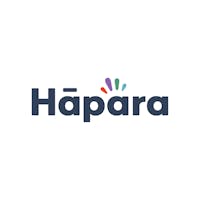We might think of educational transformation and its underlying technology as being centered in Silicon Valley; indeed, companies like Google and Apple are expanding the edtech frontier. However, schools all over the world are implementing and refining these innovations, and one Canadian school district in particular is pioneering the edtech charge.
The Ottawa Catholic School Board (OCSB) boasts eighty-five schools and more than 41,000 students, making it comparable in size to South Carolina’s Charleston County School District or Oakland Public Schools in California. OCSB serves a diverse population of children from junior kindergarten through 12th grade. Special education students and gifted learners, economically privileged and disadvantaged children, and rural and urban residents all attend the same publicly funded schools.
Six years ago, OCSB embarked on a journey to improve learning outcomes for all of their students by leveraging technology. The board’s schools adopted Chromebooks and implemented the free Google Suite for Education platform as their foundation. Then, they layered on other applications, including the Hapara Suite of apps—Highlights, Dashboard and Workspace—to help students move from physical devices to the ultimate goal of enhanced and deeper learning.
OCSB employs a central technology integration team made up of the superintendent, district level personnel, and tech specialists. Their purpose is to ensure that the technology in classrooms is being used to accelerate the district’s learning goals, including personalization, differentiation, and deeper learning. The team provides support to special education leaders, who are in turn able to share their expertise, encouraging learning for all students as well as more effective use of technology.
“The tech is just the tool that helps make reaching 21st century learning goals easier and less complicated,” says Stephanie Myers, a former classroom teacher who now serves on OCSB's tech integration team. What educators really want to know, she adds, is whether that learning is actually happening.
In order to answer that question, OCSB employed Hapara’s Analytics platform. It examines all the activity in the G Suite environment dating back to the first day of its adoption, including when and how long students are actively using Google Drive and how often they are collaborating with their teachers and peers. Analytics provides education professionals with visualizations of this data that help them answer the big question: Has our investment in education technology paid off?
OCSB’s Coordinator of Learning Technologies Rob Long took a first look at the analytics, which both validated his assumptions and provided him with some food for thought. Nearly 98% of OCSB students' homes have Internet connectivity. Thus, it did not surprise Rob that nearly all of the students were logging into their accounts from home. However, the analytics also revealed an unexpectedly high level of late-night Google Drive usage by a number of students. This was concerning; school administrators knew they needed to investigate further to figure out why students were staying up so late doing school work.

It also did not surprise Rob or Stephanie to find a clear, significant shift away from paper and toward a digital learning environment. Each year, OCSB learners and teachers are spending a larger percentage of their time in G Suite. This, in turn, means that they are creating an increasing number of digital documents that need to be managed by teachers, students, and the district.

Perhaps most interesting to the integration team was the extent to which collaboration was already happening. The analytics showed many pockets of significant collaboration in which students were working together with their peers and teachers in Drive. Many edtech proponents expect that when a school provides a solid network backbone, ample connectivity, and the right devices, learners and teachers will naturally find their way to collaboration, agency, and the other twenty-first-century teaching and learning behaviors that we all want to see. Stephanie and Rob both know this is not the case.
Shifts in practice do not come from devices alone, but from a well-planned and executed implementation strategy that includes ongoing professional learning. Stephanie and Rob don’t stop after training teachers how to use devices; as teachers become more proficient with the technology, additional conversations, coaching and modeling lead to bigger shifts in practice. Thus despite the evidence of successful collaboration, there is a long way to go before the integration team will consider the work done.
This year’s professional learning plan emphasizes the ways that both G Suite and Hapara learning support tools can be used for simpler, faster collaboration in support of the school board’s goal of increasing the frequency of formative assessment. The team at OCSB used the analytics to generate an action plan and build more detailed support systems for teachers unfamiliar with G Suite and those incorporating new technology into their instruction. As the plan is implemented, OCSB will be able to continue using Analytics to make adjustments—ensuring their teachers have all of the support they need.
Stay tuned to learn how OCSB schools continue to pursue improved learning outcomes for all of their students.
RESOURCES FROM HAPARA
Hapara Professional Learning courses support use of Hapara products, encourage best practices, and include data interpretation courses. Our goal is to help educators adopt instructional practices that foster their shift to digital learning. Many OCSB teachers have also enrolled in digital learning training as part of the Hapara Certified Educator program, an 8-week course for educator leaders. Other resources include:
- A video featuring student centered learning in OCSB schools.
- Information about Hapara Analytics.
- Information about Hapara Class Management Tools.



